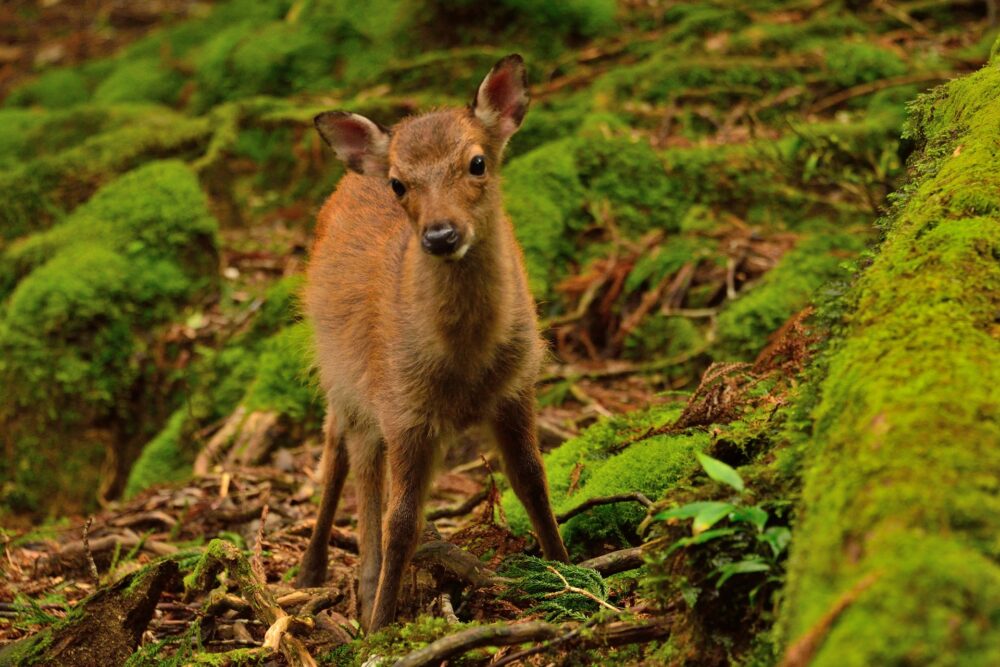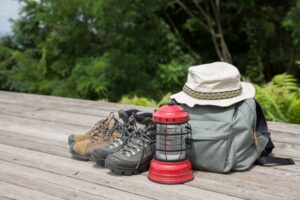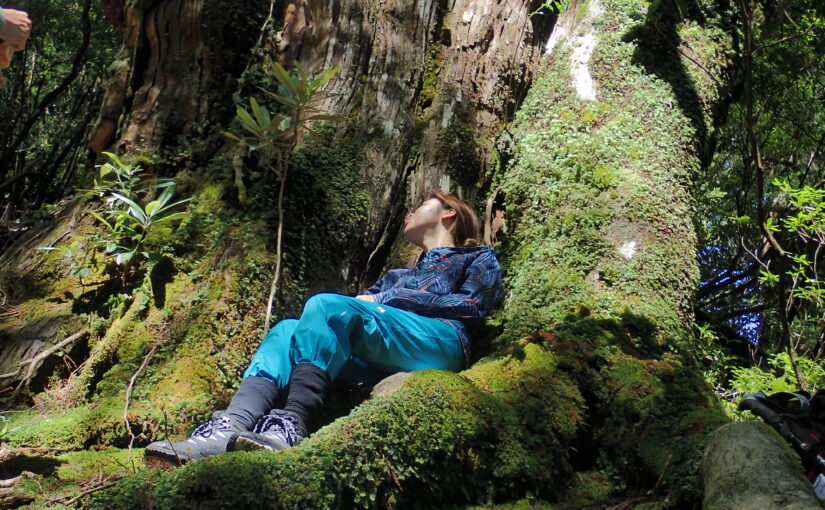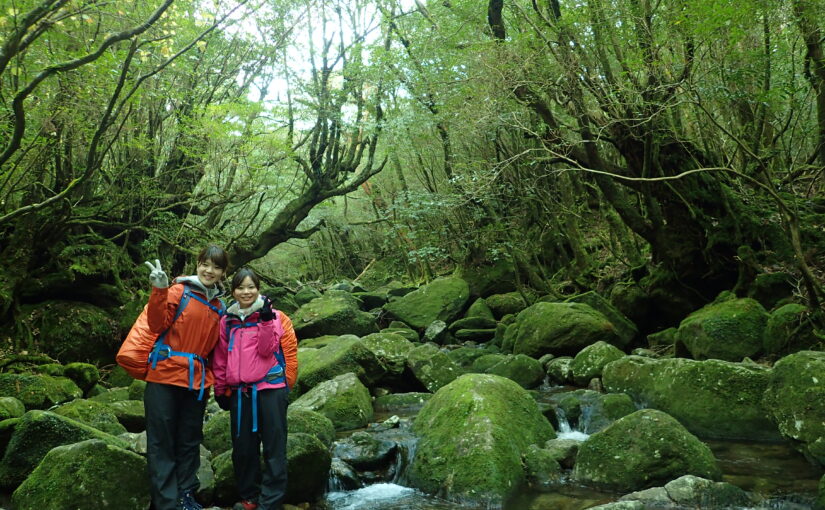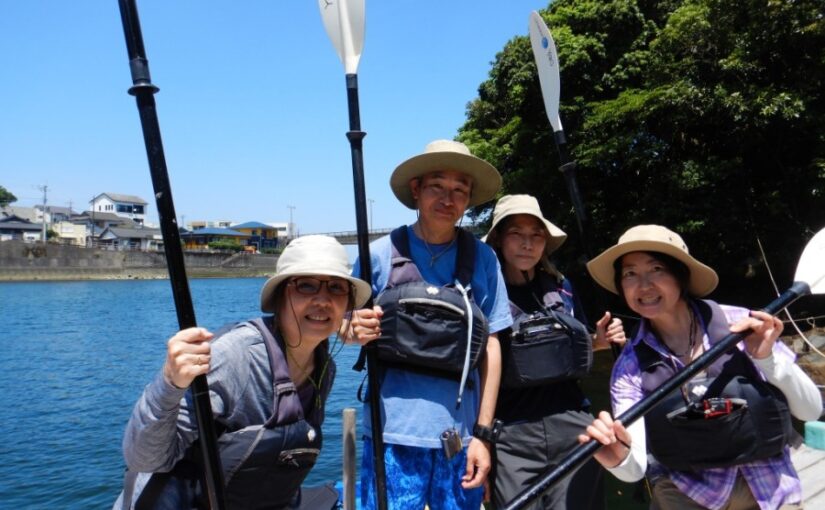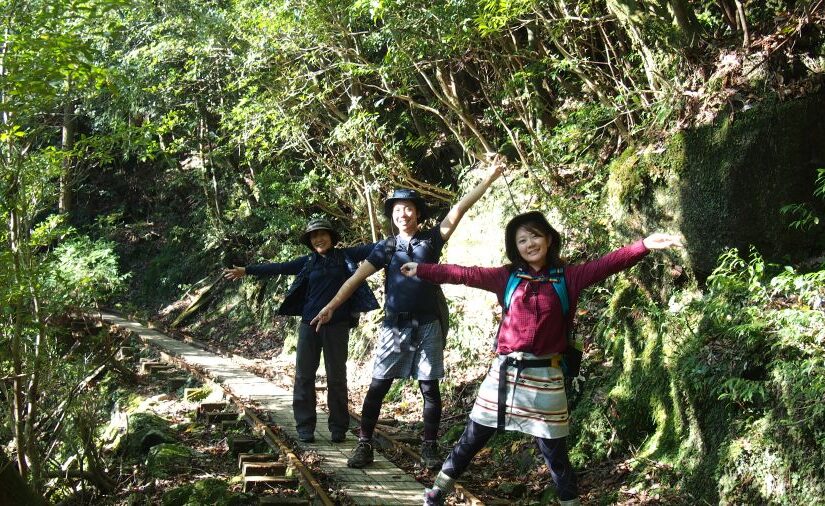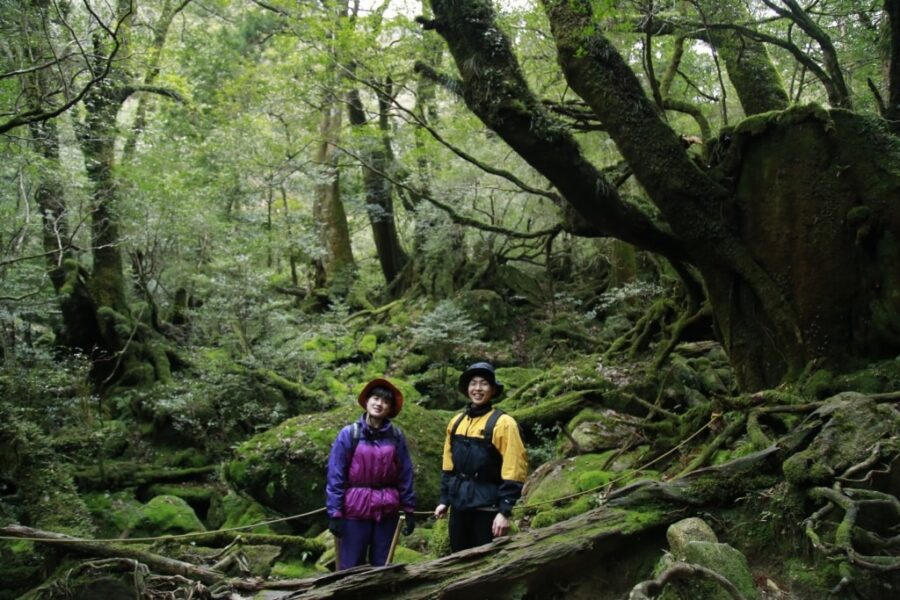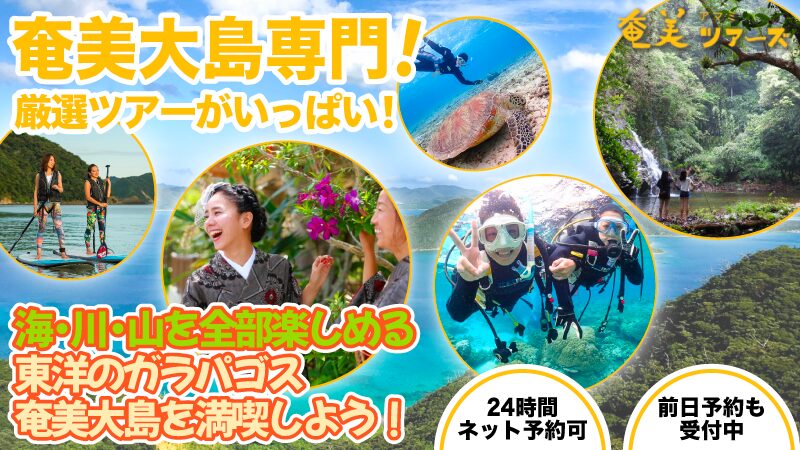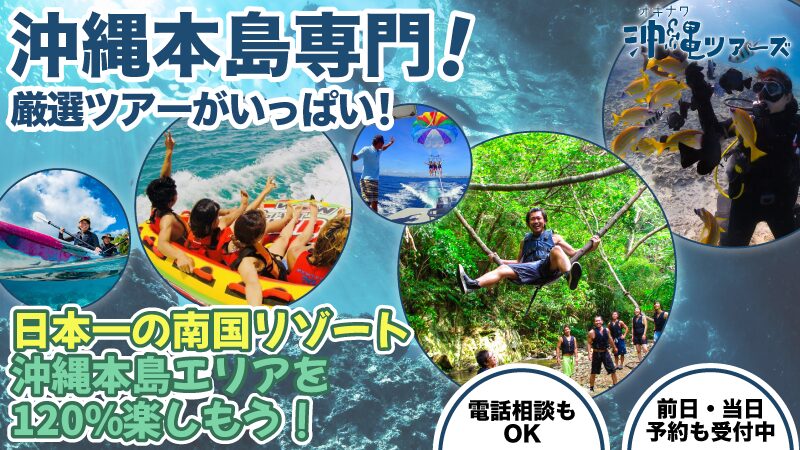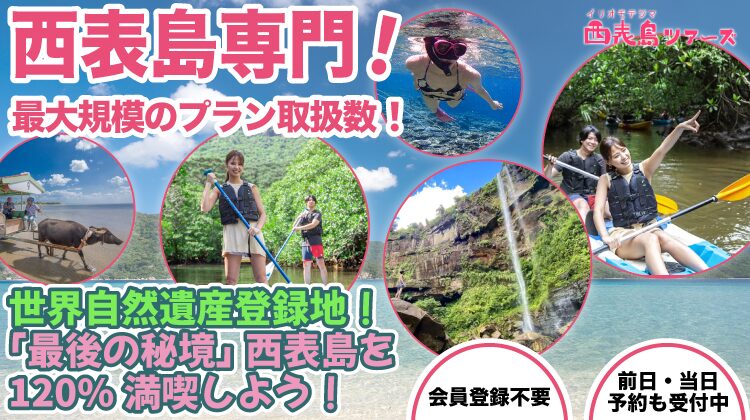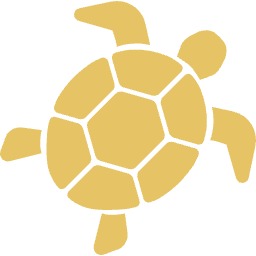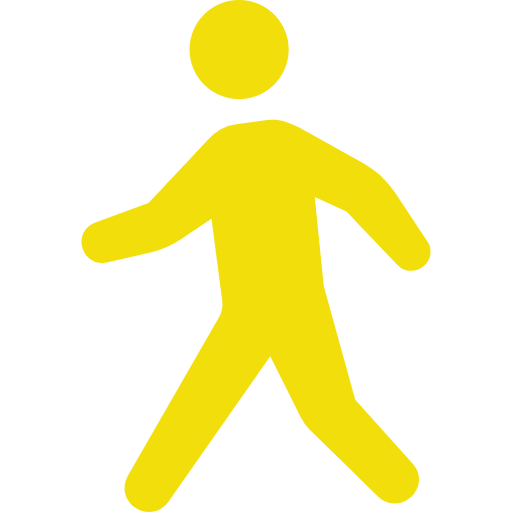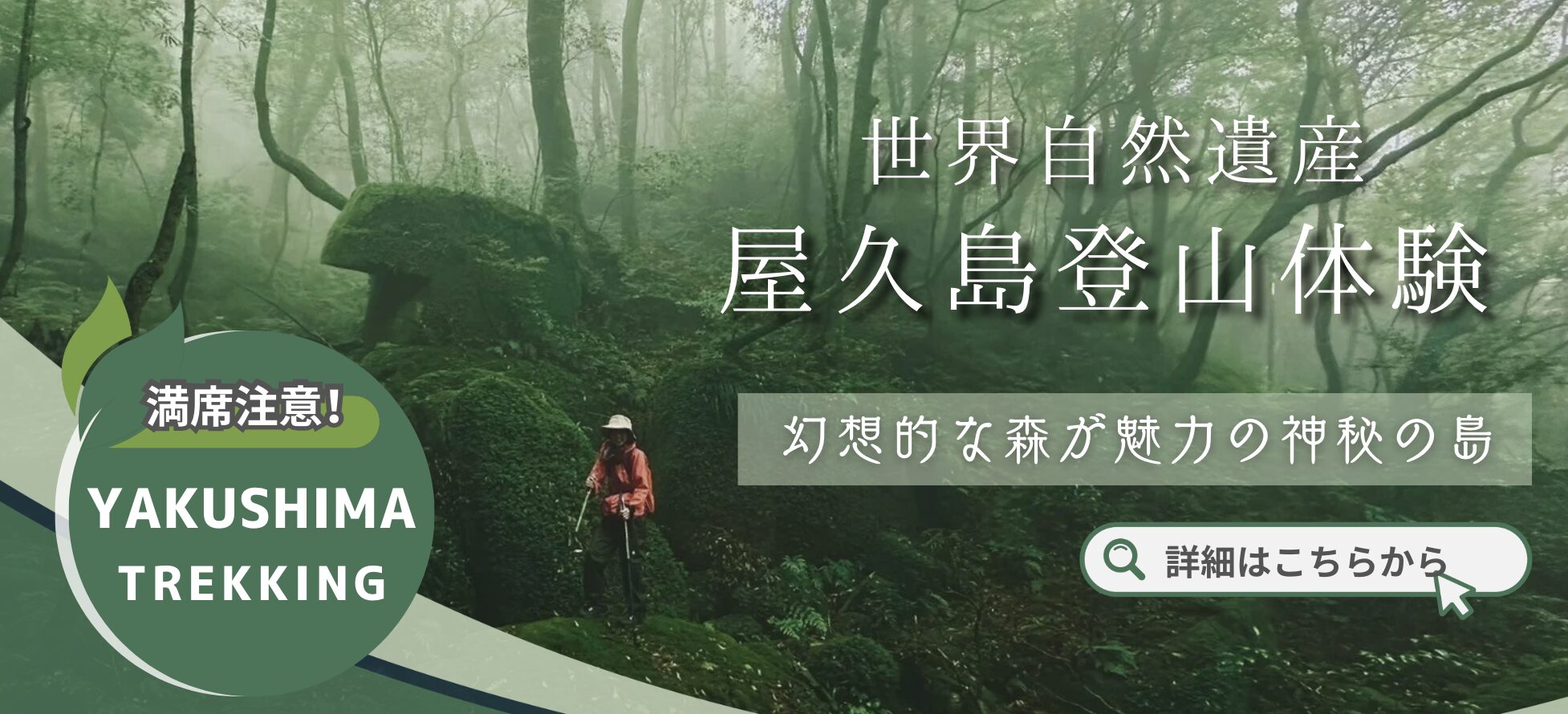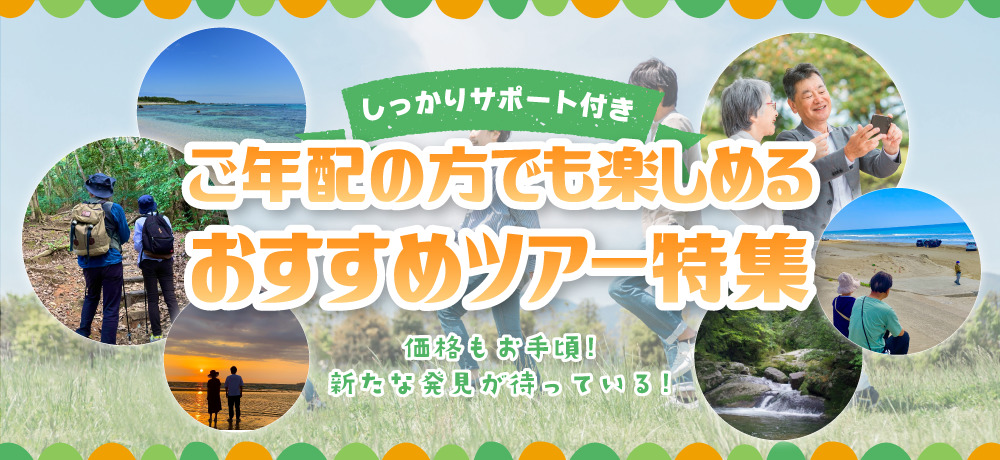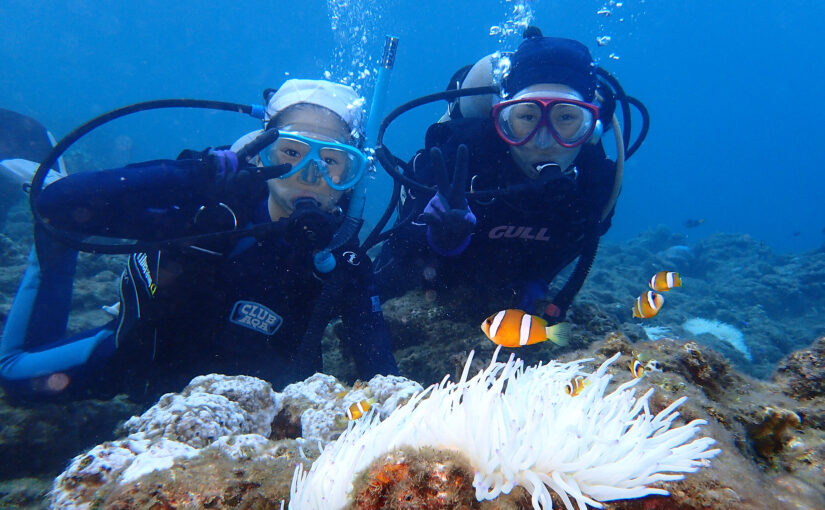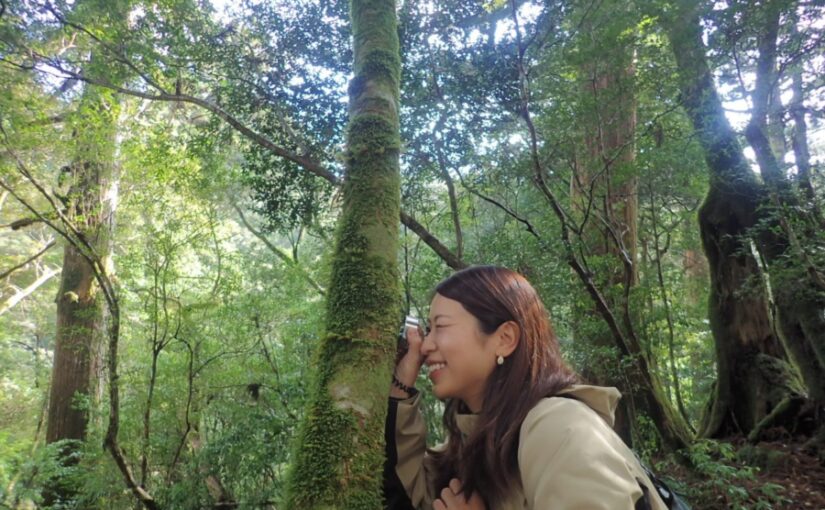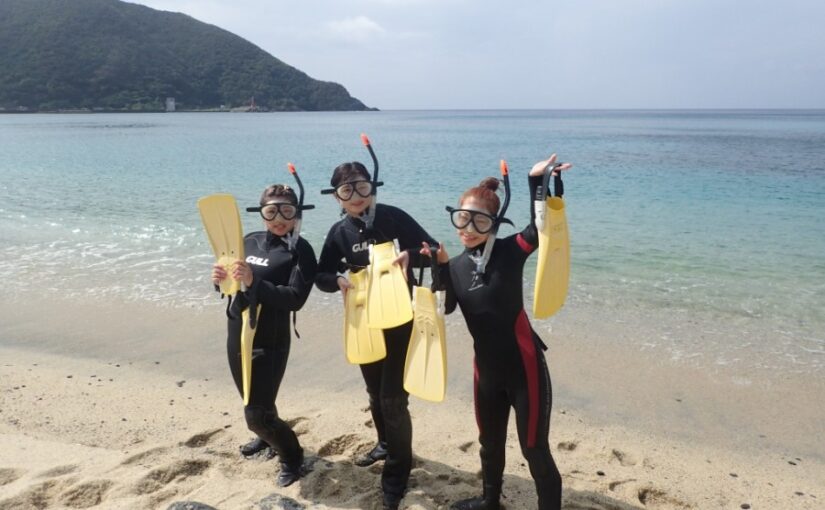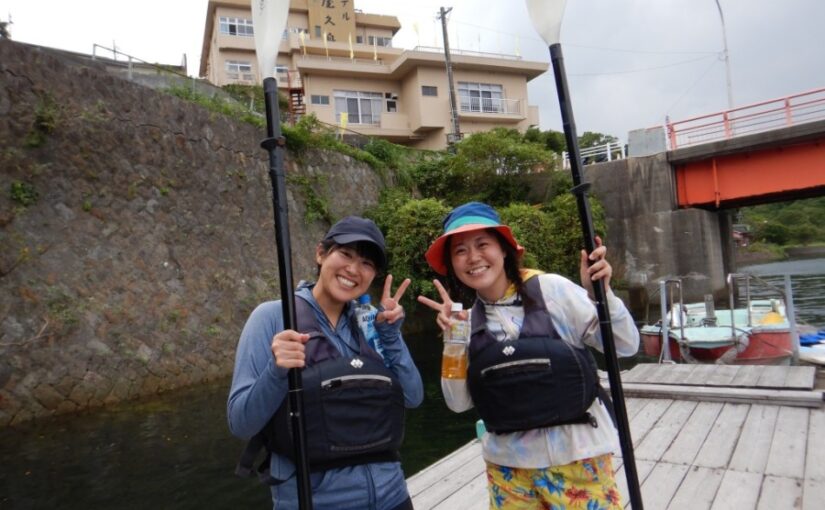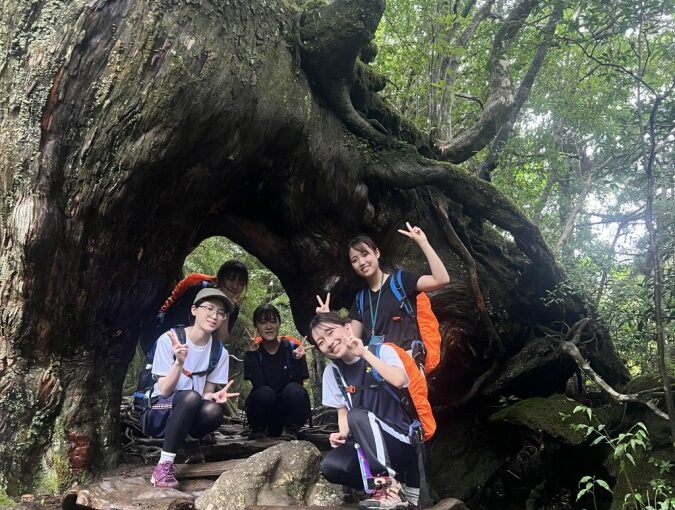What are Deer in Yakushima? Let's take a closer look at the nature of Yakushima and the ecology of Yakushima deer!
Table of Contents
- 1 Let's meet Yakushika deer♪ What is the ecology and characteristics of Yakushima deer?
- 2 Habitat and living environment of Yakushika deer
- 3 What is a Yakushika? A Thorough Explanation of Their Kinds and Characteristics
- 4 Let's meet Yakushika deer! Recommended Spots and Eco Tours
- 5 I want to meet yak deer! Recommended season and best timing
- 6 Points to keep in mind when observing Yakushika deer
- 7 Q&A about Yakushika
- 8 Yakushika and Ghibier Culture
- 9 summary
Meet the Yakushika♪
What is the ecology and characteristics of deer on Yakushima Island?
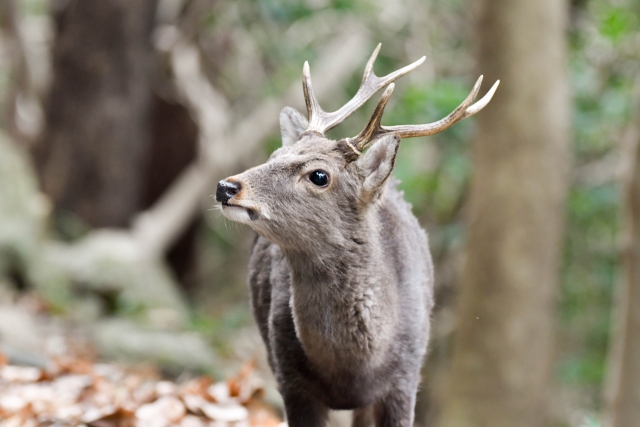
Yakushima Island is known for its rich natural environment, and its ecosystem has a special charm.
Among them, the "yakushika" is the symbol of the island.
Here are some of the characteristics of yak deer and tours where you can actually see them♪
◆Yakushima Island, Japan: Planning a trip to Yakushima Island?
Those who are interested in nature conservation and environmental activities in Yakushima
◆Yakushima Island, looking for activities when visiting Yakushima Island.
Held in Yakushima!
Click here for recommended tour ranking
Habitat and living environment of Yakushika deer
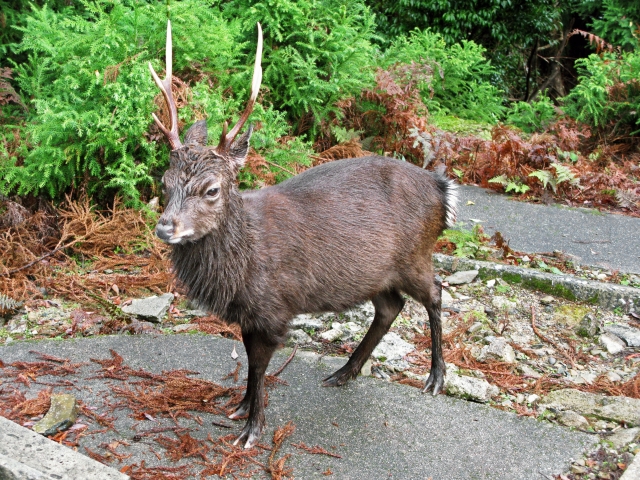
The habitat of the yakushika deer is the high mountainous areas and rich forests of Yakushima, especially in areas above 1,000 meters in elevation on Yakushima.
Yak deer also live in groups, and it is common for them to form herds! In a herd, the stronger individual becomes the leader and protects the females and fawns.
What is Yakushika?
Thorough explanation of types and features

The Yakushima sika deer is a subspecies of the "Japanese deer" that lives in Honshu, Japan, and has unique characteristics that have adapted to the unique environment of Yakushima.
Here are some of the characteristics of such Yakushika♪
Distinctive appearance and habits
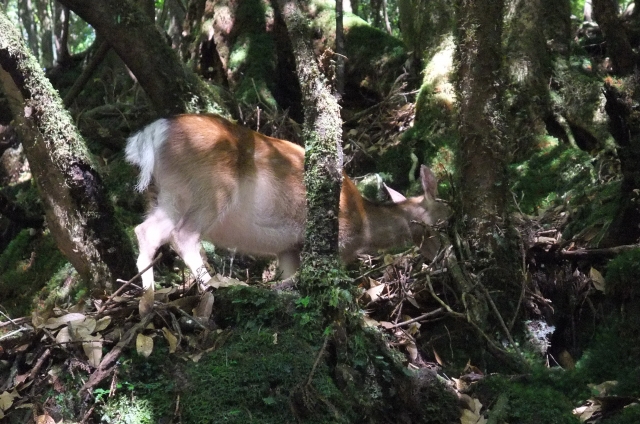
Yakushika deer are characterized by a slightly smaller body and lighter body color than other Japanese deer.
They maintain their whitish fur even in winter and have a coloring that blends in with their environment.
Deer often live in herds, especially in the rich natural environment of Yakushima, feeding on grass and leaves.
Yakushika deer ecology and behavior
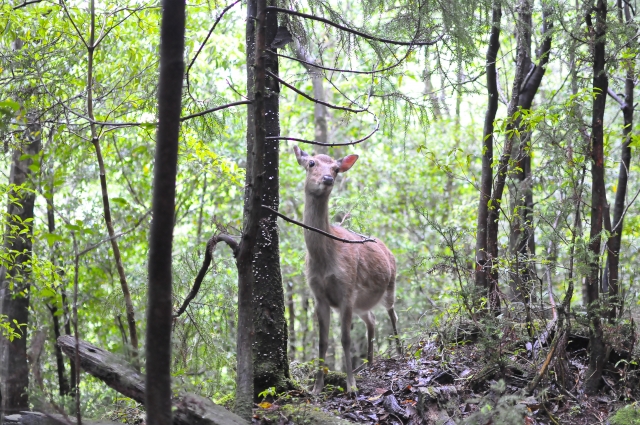
Yakushika deer are diurnal and are especially active in the early morning and evening. They are also adapted to the humidity and climate unique to Yakushima, and live vigorously even in the rainy climate of Yakushima.
They play an important role in the rich ecosystem of Yakushima and are a precious sight to see in their natural habitat.
Meet the Yakushika♪
Recommended Spots and Eco Tours
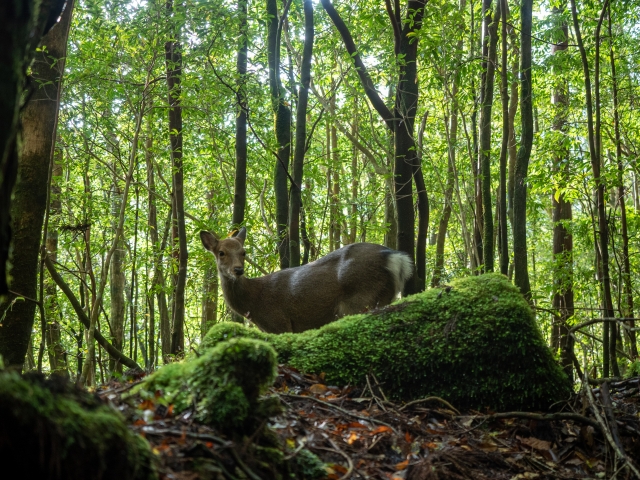
Deer on Yakushima can be found throughout the island, but are especially abundant in the mountainous and forested areas of Yakushima.
Here is the actualRecommended tours of spots where you have a good chance of seeing Yakushika deerto the following!
Western Forest Road (Seiburi Rindo)
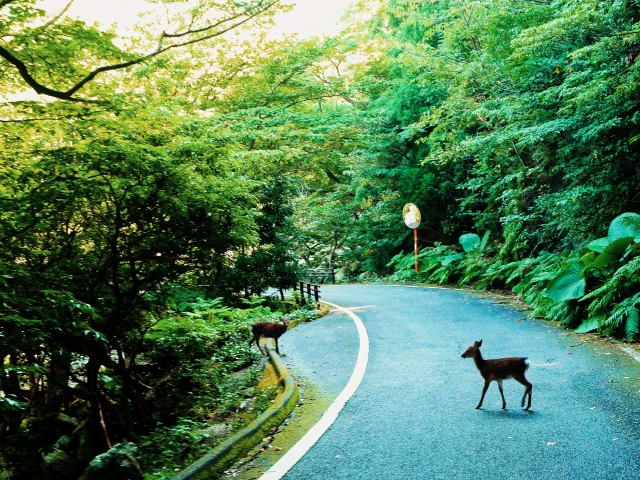
The Western Forest Road is a drive through the World Heritage Area,You can see yak monkeys and yak deer in the wild.It is famous for its
You can observe animals in their natural habitat from the window of the car and enjoy a safari-like experience.
Access: 41 minutes by car from Miyanoura to the western forest road entrance on the Nagata side
47 minutes by car from Awa to the western forest road entrance on the Kurio side
For more information about the Western Forest Road, click here↓.
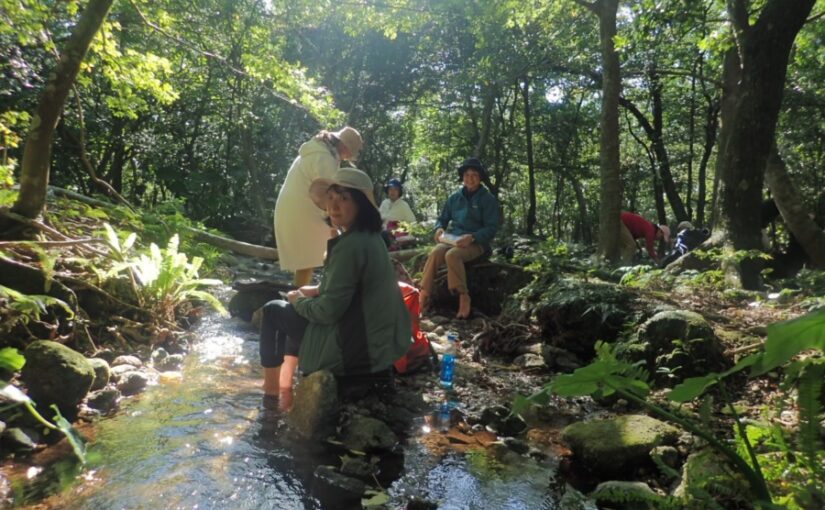 Yakushima - Western Forest Road What is Seibu Rindo (Western Forest Road)? Seibu Rindo is located on the west side of Yakushima Island and is so blessed with nature that it is designated as a "World Natural Heritage Site. It is a popular driving course. Seibu Rindo has no clear entrance or exit, [...].
Yakushima - Western Forest Road What is Seibu Rindo (Western Forest Road)? Seibu Rindo is located on the west side of Yakushima Island and is so blessed with nature that it is designated as a "World Natural Heritage Site. It is a popular driving course. Seibu Rindo has no clear entrance or exit, [...].
Click here for the Western Forest Road Walking Trail.
I would like to meet a Yakushka!
Recommended season and best timing
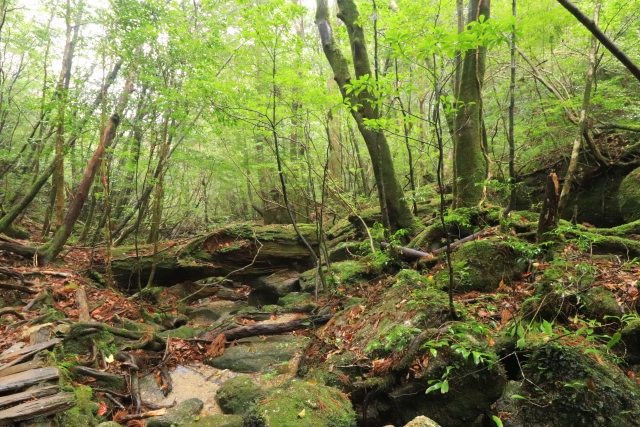
Knowing the best time to encounter deer on your trip to Yakushima will make your trip even more fulfilling.
To see deer, keep the following points in mind!
Click here to read the article in conjunction with this one.
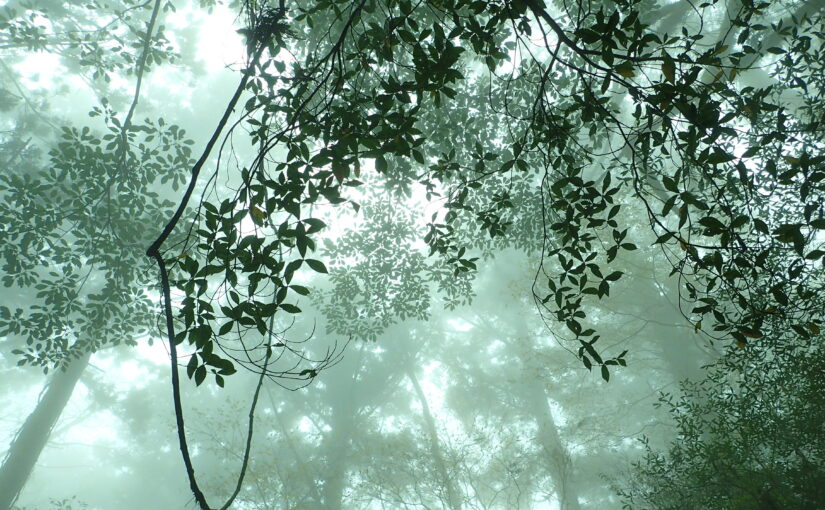 When is the best season to travel to Yakushima? When is it raining most? Seasonal characteristics, climate, and precipitation!Contents1 When is the best season to travel to Yakushima? 2 Let's know the attraction of the best season3 Spring climate of Yakushima3.1 Spring temperature and precipitation4 Summer climate of Yakushima4.1 Summer temperature and precipitation5 Autumn climate of Yakushima5.1 Autumn temperature and precipitation6 Winter of Yakushima [...].
When is the best season to travel to Yakushima? When is it raining most? Seasonal characteristics, climate, and precipitation!Contents1 When is the best season to travel to Yakushima? 2 Let's know the attraction of the best season3 Spring climate of Yakushima3.1 Spring temperature and precipitation4 Summer climate of Yakushima4.1 Summer temperature and precipitation5 Autumn climate of Yakushima5.1 Autumn temperature and precipitation6 Winter of Yakushima [...].
Spring (March - May)

In spring, Yakushima's nature is enveloped in fresh greenery and the deer become more active. During this season, the mountains change color with flowers,Great timing to meet deer.It is. It is also a good time to spot deer while hiking, as the daytime temperatures are warmer and easier to walk in.
Autumn (September to November)
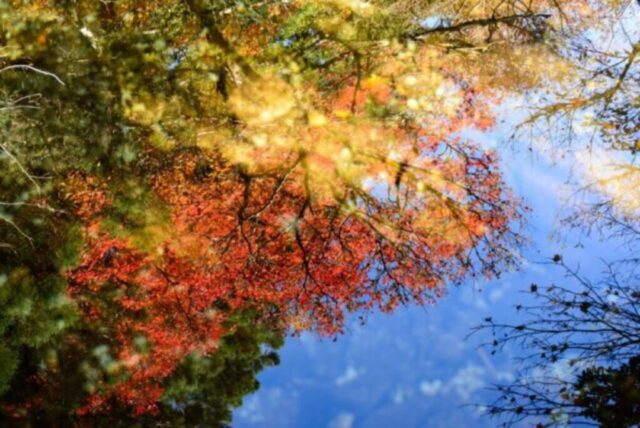
Autumn is also the deer breeding season, when the bucks are especially active in order to attract females.
At this time of year, it is easy to witness the sounds and sightings of deer, and there is a chance to observe deer life at a closer distance♪
The autumn leaves of Yakushima are also beautiful, and this is the recommended season to enjoy the wonderful scenery of nature!
Winter (December - February)
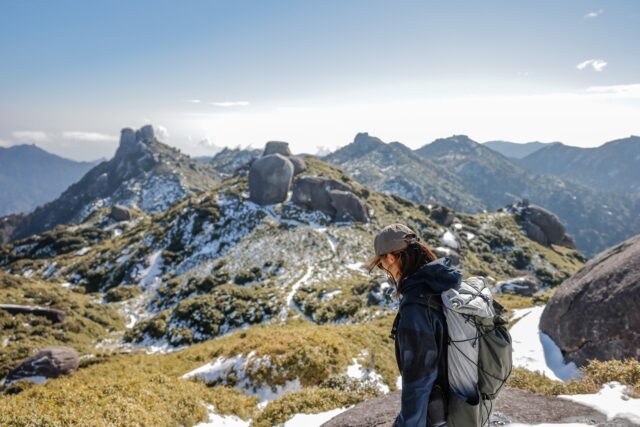
Winter on Yakushima is relatively mild, but the high humidity makes it a particularly active time for deer.
The winter season is a good time to observe deer in a calm environment because there are fewer tourists!
You can find deer in fantastic scenery♪
Points to keep in mind when observing Yakushika deer
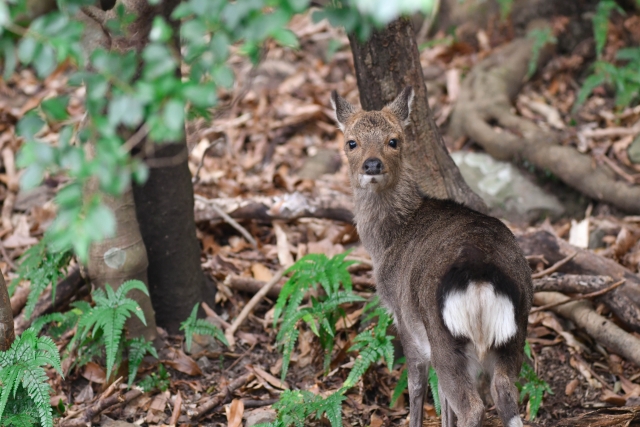
The Western Forest Road in Yakushima is a beautiful road surrounded by rich nature, but driving and behavior must take into account the condition of the road and encounters with wild animals.
â- Especially since you have the chance to get up close and personal with the creatures, make sure you take precautions and enjoy yourself safely.â
Driving Precautions
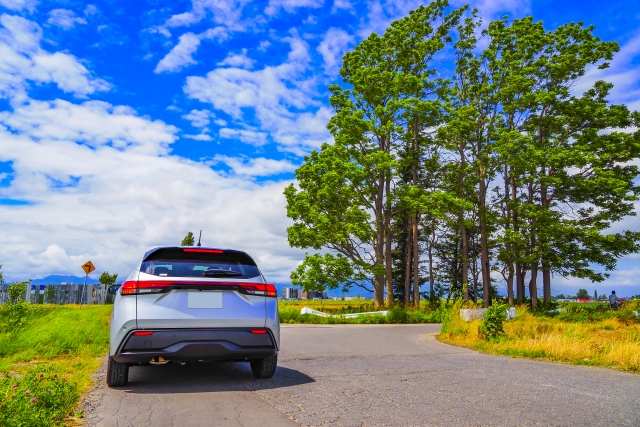
The Western Forest Road, especially within the World Natural Heritage Area, is very narrow and requires extreme caution when driving!
It is important to drive safely and check the evacuation spaces before and after the road.
Do not open windows too much.
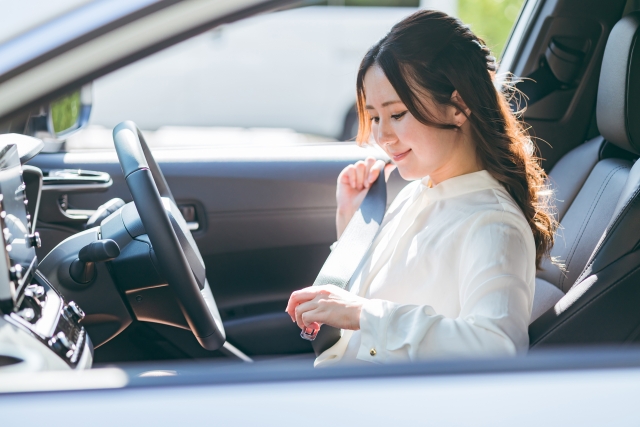
Driving along the western forest road, you can feel the refreshing ocean breeze, but be careful not to open your car windows too much in case a yak monkey or yak deer approaches!
Since wild animals can behave unpredictably, it is safer to keep windows slightly open or completely closed.
Do not honk your horn
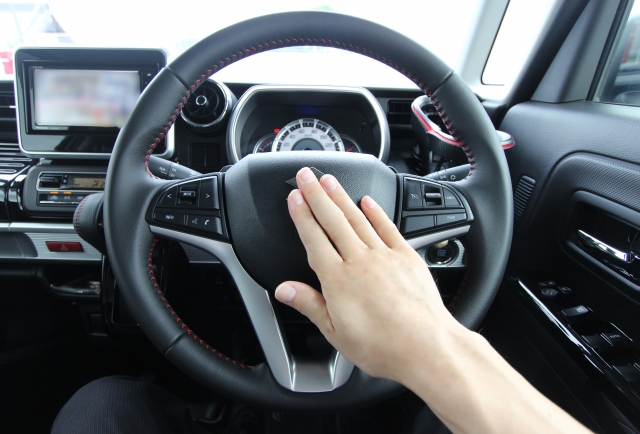
When encountering a yak monkey or yak deer blocking the road, avoid honking your horn in an attempt to hurry forward.
Loud noises may startle animals and cause them to behave unexpectedly.
By going slowly, the animals will often clear the way for you, so be sure to give yourself plenty of time!
I don't feed them.
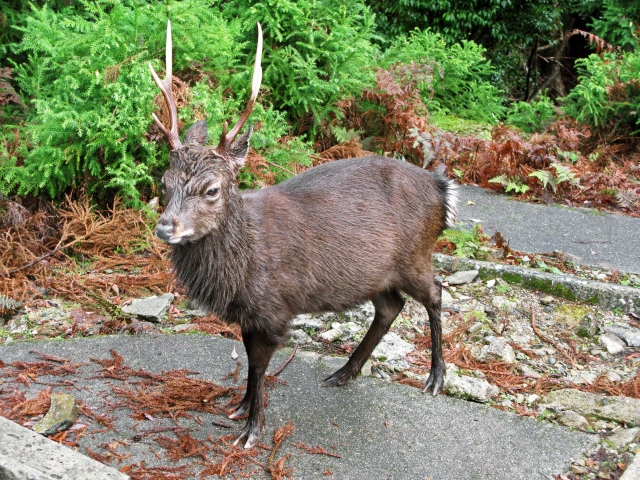
Never feed yak monkeys or yak deer.
Please note that Yakushima Town has enacted an "Ordinance Prohibiting the Feeding of Monkeys, etc." and a fine may be imposed for violations!
I don't touch animals.

Avoid touching wild animals. Yak monkeys and yak deer may appear gentle, but they are at risk of being attacked by contact.
They can also catch colds from humans. Do not stress the animals and enjoy their appearance in a natural way.
Check traffic regulations
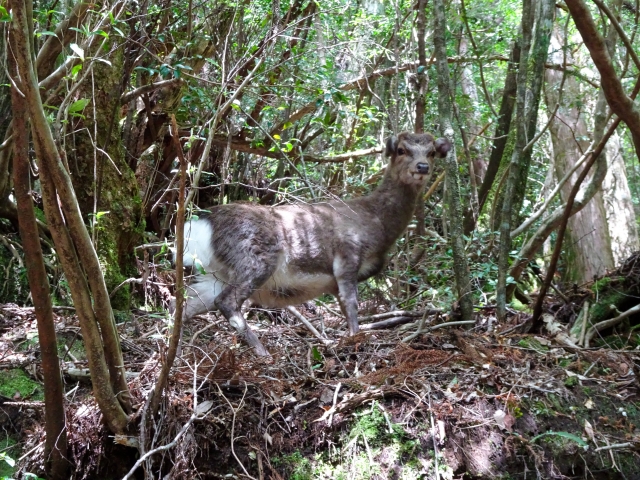
The Western Forest Road may be closed to traffic at certain times of the year!
Before visiting, it is recommended to check the official website of the town of Yakushima for traffic conditions.
Furthermore, since there is no cell phone reception within the Western Forest Road, we recommend that you make adequate preparations in advance.
Q&A about Yakushika
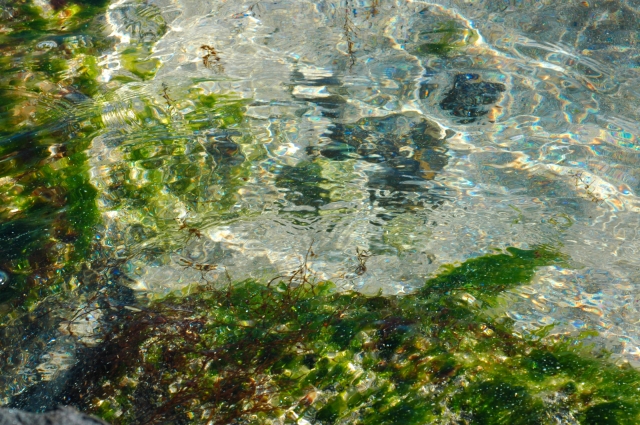
Here we answer some questions about Yakushika!
Q1: What is the Where can I see yak deer?
Yakushika deer inhabit the high mountainous areas and rich forests of Yakushima. They are especially known for their "Western Forest RoadYou can view it at
Access: 41 minutes by car from Miyanoura to the western forest road entrance on the Nagata side
47 minutes by car from Awa to the western forest road entrance on the Kurio side
For more information about the Western Forest Road, click here↓.
 Yakushima - Western Forest Road What is Seibu Rindo (Western Forest Road)? Seibu Rindo is located on the west side of Yakushima Island and is so blessed with nature that it is designated as a "World Natural Heritage Site. It is a popular driving course. Seibu Rindo has no clear entrance or exit, [...].
Yakushima - Western Forest Road What is Seibu Rindo (Western Forest Road)? Seibu Rindo is located on the west side of Yakushima Island and is so blessed with nature that it is designated as a "World Natural Heritage Site. It is a popular driving course. Seibu Rindo has no clear entrance or exit, [...].
Click here for the Western Forest Road Walking Trail.
Q2: What is the Are Yakushika dangerous?
They are generally docile and do not act aggressively toward people! However, since they are wild animals, we recommend that you do not get too close to them, but observe them from a distance.
Q3: What is the Yak deer can be observed.
When is the best time?
Deer are active in the early morning and evening, so these are the best times to observe them!
Spring and fall are also seasons when food is abundant and deer are in high spirits.
Q4: What is the Yak deer conservation efforts include
Can I participate?
Deer conservation activities and eco-tours are conducted on Yakushima Island. Tourists can also participate in these activities and learn about environmental protection.
Held in Yakushima!
Click here for recommended tour ranking
Yakushika and Ghibier Culture
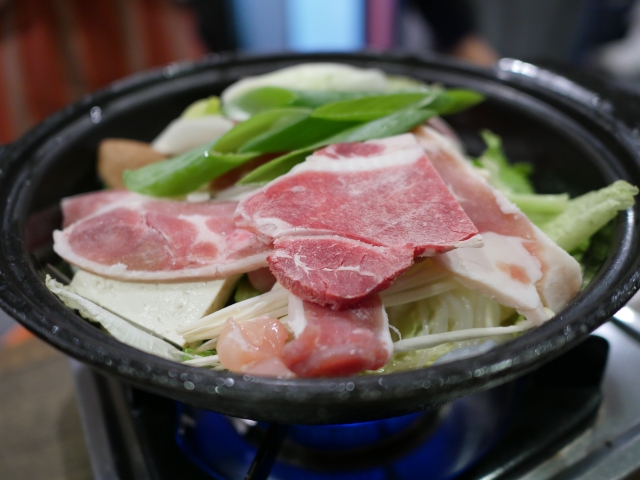
Yakushima deer, which live naturally on the island, are also attracting attention as "gibier" among local residents and the tourism industry!
Gibier refers to the culture of using wild animals as foodstuffs, and in Yakushima, venison is utilized in some dishes.
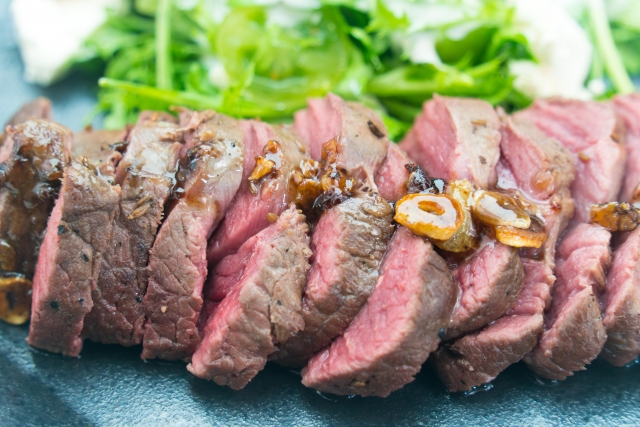
Venison is also popular among health-conscious people because it is healthy and rich in protein.
However, its use as gibier requires proper management and coordination.
On Yakushima Island, the increase in the deer population has led toThe Problem of "Food Pollution"There are also
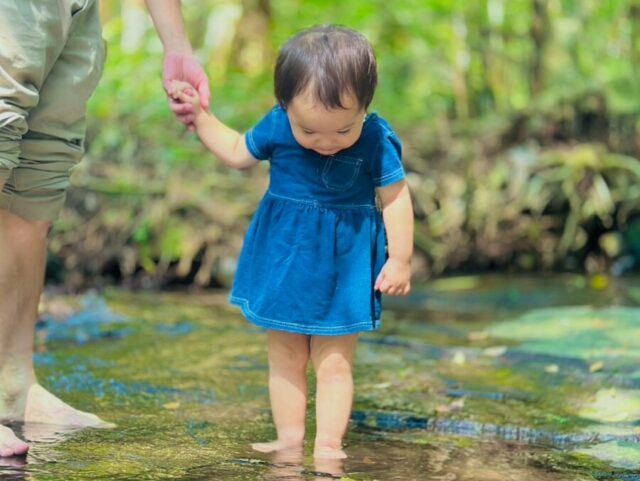
Overpopulation of deer can have a significant impact on forest vegetation, especially when feeding damage to young trees and plants becomes a problem.
This can have a negative impact on the valuable ecosystem of Yakushima, making its management an important issue.
The use of gibier is a key component of theseOne of the measures to reduce food damageas a means to properly control deer populations.
summary
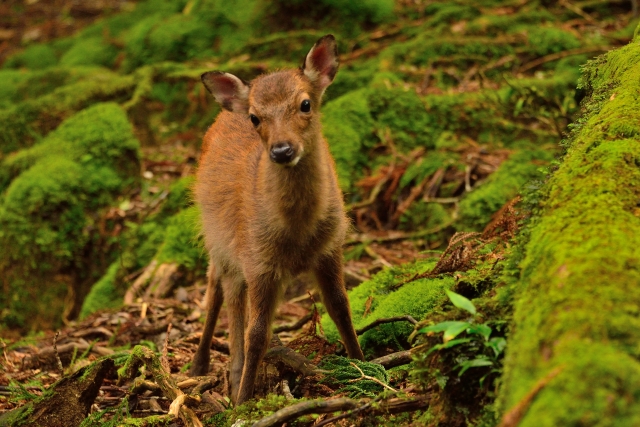
Yakushima deer are closely related to the nature of Yakushima, and their presence is essential to the island's ecosystem.
It is also a very popular tourist destination, attracting many visitors in search of deer encounters.
By learning about the Yakushima deer's ecology, habitat, and conservation activities, visitors will be able to experience the nature of Yakushima even more deeply.
⬇︎ Read the article at ⬇︎
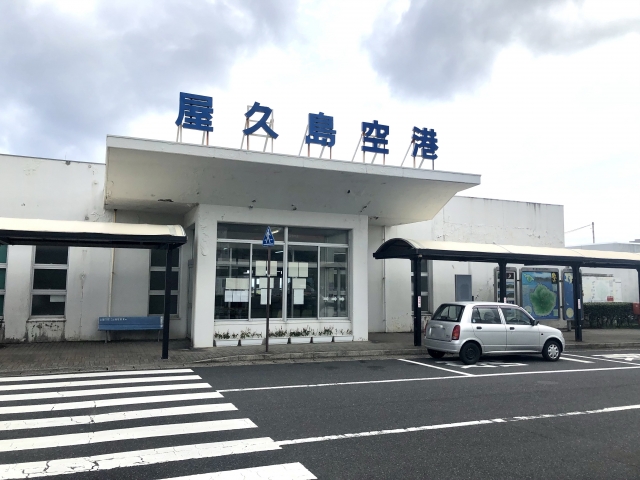 How to get to Yakushima Airport|Direct flights from various cities & how to get there! Information on places to pass the time around Yakushima Airport.Contents1 What is Yakushima Airport like? 2 How to get to Yakushima Island and operation information3 Flights are fast and convenient! Direct flights from each city to Yakushima Airport3.1 Osaka Itami Airport to Yakushima Airport3.2 Fukuoka Airport to Yakushima Airport3.3 Kagoshima Airport to Yakushima Airport4 [...].
How to get to Yakushima Airport|Direct flights from various cities & how to get there! Information on places to pass the time around Yakushima Airport.Contents1 What is Yakushima Airport like? 2 How to get to Yakushima Island and operation information3 Flights are fast and convenient! Direct flights from each city to Yakushima Airport3.1 Osaka Itami Airport to Yakushima Airport3.2 Fukuoka Airport to Yakushima Airport3.3 Kagoshima Airport to Yakushima Airport4 [...].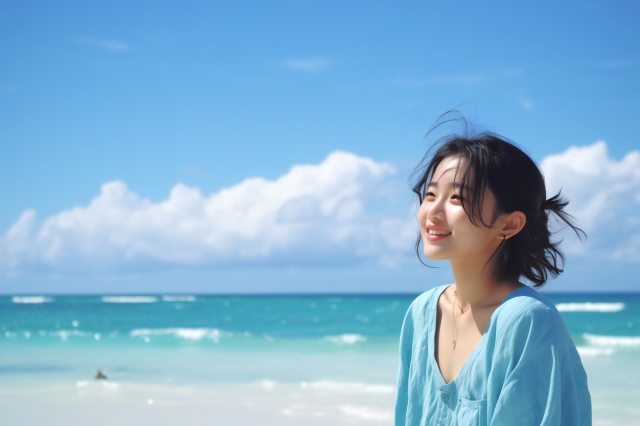 Yakushima is full of attractions for a solo trip! We also introduce tours that allow you to fully enjoy the charms of Yakushima.Contents1 Recommended for first time travelers! Introducing the charm of Yakushima Solo Travel2 How to get to Yakushima Island3 What is the charm of Yakushima Solo Travel3.1 ①There are many tours you can join by yourself3.2 ②You can change your schedule flexibly3.3 ③Yakushima Solo Travel is easy to [...
Yakushima is full of attractions for a solo trip! We also introduce tours that allow you to fully enjoy the charms of Yakushima.Contents1 Recommended for first time travelers! Introducing the charm of Yakushima Solo Travel2 How to get to Yakushima Island3 What is the charm of Yakushima Solo Travel3.1 ①There are many tours you can join by yourself3.2 ②You can change your schedule flexibly3.3 ③Yakushima Solo Travel is easy to [...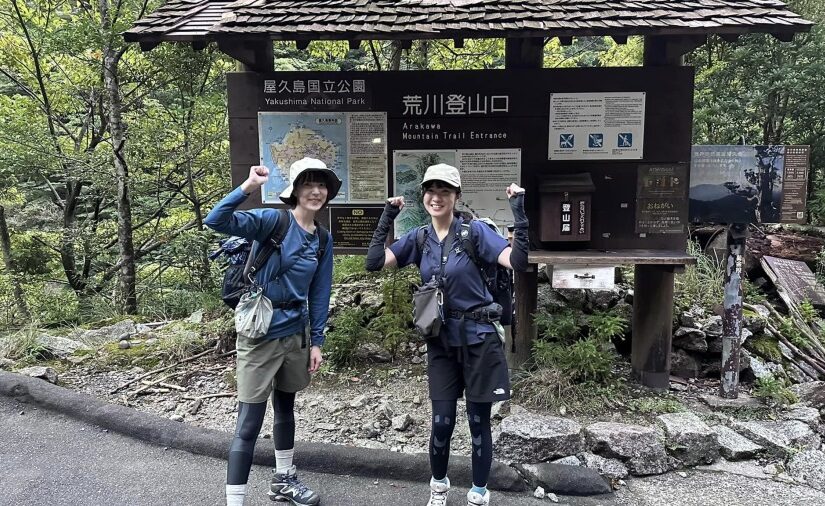 Introducing sightseeing spots and activity tours that you should not miss on your trip to Yakushima!Contents1 Must-see for those who travel to the World Heritage Site "Yakushima"! Thorough explanation of recommended tours and sightseeing spots2 How to get to Yakushima Island3 Weather in Yakushima Island (weather and temperature)4 Essential for a trip to Yakushima Island! 6 recommended activity tours4.1 [...]
Introducing sightseeing spots and activity tours that you should not miss on your trip to Yakushima!Contents1 Must-see for those who travel to the World Heritage Site "Yakushima"! Thorough explanation of recommended tours and sightseeing spots2 How to get to Yakushima Island3 Weather in Yakushima Island (weather and temperature)4 Essential for a trip to Yakushima Island! 6 recommended activity tours4.1 [...]
